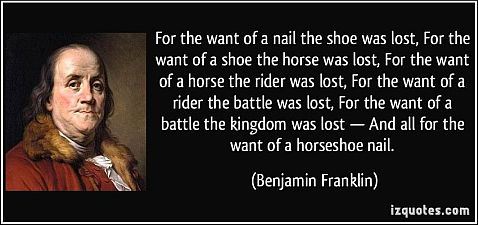Every function, every job in an organization is somehow connected with their organization’s strategies, goals, and objectives. Every organization has goals—revenue, earnings, growth, market penetration, geographic penetration, product/offering growth, how they are perceived by customers, how they are perceived in their communities, expansion, competitive positioning, and on and on.
The top executives and boards establish these goals and objectives. In turn they translate to goals for each functional organization, engineering/product development has goals/objectives that contribute to the corporate goals. Manufacturing, service delivery, customer support, finance, operations, marketing, sales each have goals that contribute to those of the organization. Yes, even HR and Legal.
Collectively, if each function achieves its goals, the organization should achieve the goals it has established.
Within each part of the organization, goals are cascaded throughout that function. These go to every part of the organization, down to the lowest level. If any single individual fails, it usually doesn’t cripple the company, but if enough fail, it can have a serious impact. For example, if an engineering team fails with a new product release, it can have a major impact on the organization. If manufacturing quality slips, if receivables start to skyrocket, each has an adverse impact on the attainment of the overall organization’s goals.
And we know, if enough sellers fail to achieve their goals, it not only impacts their personal performance, but ripples throughout the rest of the organization, impacting their ability to meet their commitments.
In theory, every person in the organization knows how they contribute to the success of their department, function, and the organization.
The reality, often, is they may not understand this. They may not be able to connect the dots between what their part of the organization does, and how it contributes to the overall success of the enterprise.
When we are working with them, they tend to focus on their problems/challenges, what they want to achieve. And our success is based on helping them achieve their goals. But sometimes, they don’t get the support from management they need. While we may have a business justified proposal, management simply doesn’t care.
In other times, departments and functions may be so focused on just getting the work done, they don’t understand how changes might impact their ability to contribute to the success of the enterprise.
“For the want of a nail, a horseshoe was lost. For the loss of a horseshoe, a horse was lost. For the loss of a horse, a rider was lost…… A kingdom was lost.”
Often, our customers cannot connect the dots between what they do and it’s impact on the organization. We create great value, helping them connect those dots. While the impact may not be huge, the ability to connect the dots between their change effort and it’s impact on their function and the rest of the organization can help drive the change they need and want.
As we help our customers change, connecting the dots of that change is important.
Afterword: Some of you may recognize the process of “connecting the dots” within the organization is the principle underlying “OKRs” (Objectives and Key Results). One of the best books on this was written years ago by John Doerr, Measure What Matters. It’s a must read for all sellers.
Afterword: Within our own organizations, it’s important for leaders to connect the dots for their roles and those of their people.

Leave a Reply